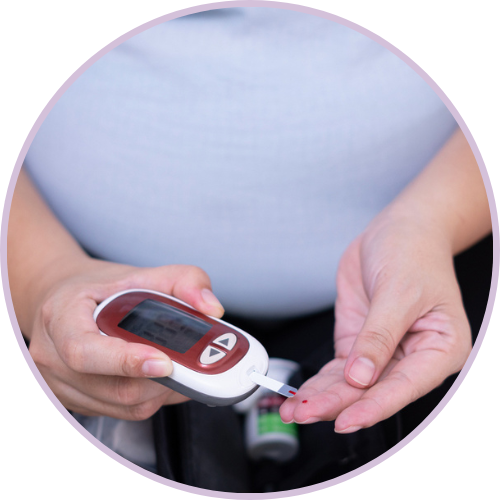 The first step in reversing prediabetes is to know your numbers.
The first step in reversing prediabetes is to know your numbers.To know your numbers you can either test at home with your own device or visit your healthcare clinic. The most immediate test is a fasting glucose test that measures your blood sugar levels after 8-12 hours of fasting and drinking only water.
To see how your blood sugar levels have been during the past 3 months, you would need to have a blood draw at the clinic for an A1C test. This measures what percentage of your hemoglobin (a protein in red blood cells that carries oxygen) is coated with sugar.
The higher your A1C or fasting glucose numbers are, the higher your risk for diabetes and complications is.
Diagnosis | A1C | Fasting Glucose |
Normal | Less that 5.7% | Less that 100 mg/dl |
Prediabetes | 5.7 to 6.4 | 100-125 |
Diabetes | 6.5 and higher | 126 and higher |
Most health experts claim that Type II diabetes is preventable and is widely considered a lifestyle disease.
New research shows that Alzheimer's is actually Type 3 diabetes that is caused by insulin resistance inside the brain – some call Alzheimer's diabetes of the brain.
In 2022 the CDC estimated that 37.3 million people have diabetes. 11.3% of the US population. They also claim that about 8.5 million are undiagnosed. Americans 65 and older with diabetes is about 30%
The increase in diabetes cases is linked to an increase in risk factors. Two-thirds of adults in the Americas are overweight or obese, and only 60% get enough exercise. Additionally, diabetes may not be diagnosed until several years after onset, after complications have already arisen.
Why do we care about fasting blood sugar numbers and A1C?
Both are important indicators of insulin resistance. Insulin is a hormone made by the pancreas. It’s job is to move sugar or blood glucose from your bloodstream into your cells.
If you have high blood glucose too often for too long, your insulin has a hard time keeping up and more insulin is needed.
Eventually, you develop a resistance to this higher level of resistance and it becomes a vicious cycle. Insulin resistance is a common thread for health issues like obesity, heart disease, diabetes and dementia .In order to lower your insulin, you have to lower your blood sugars.
Losing weight isn’t all about food, it really is about hormones and specifically, insulin.
Insulin is affected by your cortisol levels, the stress hormone.
Chronic stress keeps your cortisol levels elevated and that causes high blood sugar levels because our bodies are designed to fight or flee from stress. In order to fight or flee, our muscles need energy so blood sugar is released in anticipation.
Just an FYI, sleep deprivation is a form of stress on the body! There is a link between sleep deprivation and diabetes
When our stress is mental or emotional and we don’t need to use our muscles then that blood sugar isn’t used up so extra insulin is needed to push it into the cells. That’s how blood sugar gets into your cells, it’s either pushed by insulin or pulled by muscle demand.
However, as Dr. Gabrielle Lyon says, you can’t out exercise a bad diet and you can’t out diet no training!






